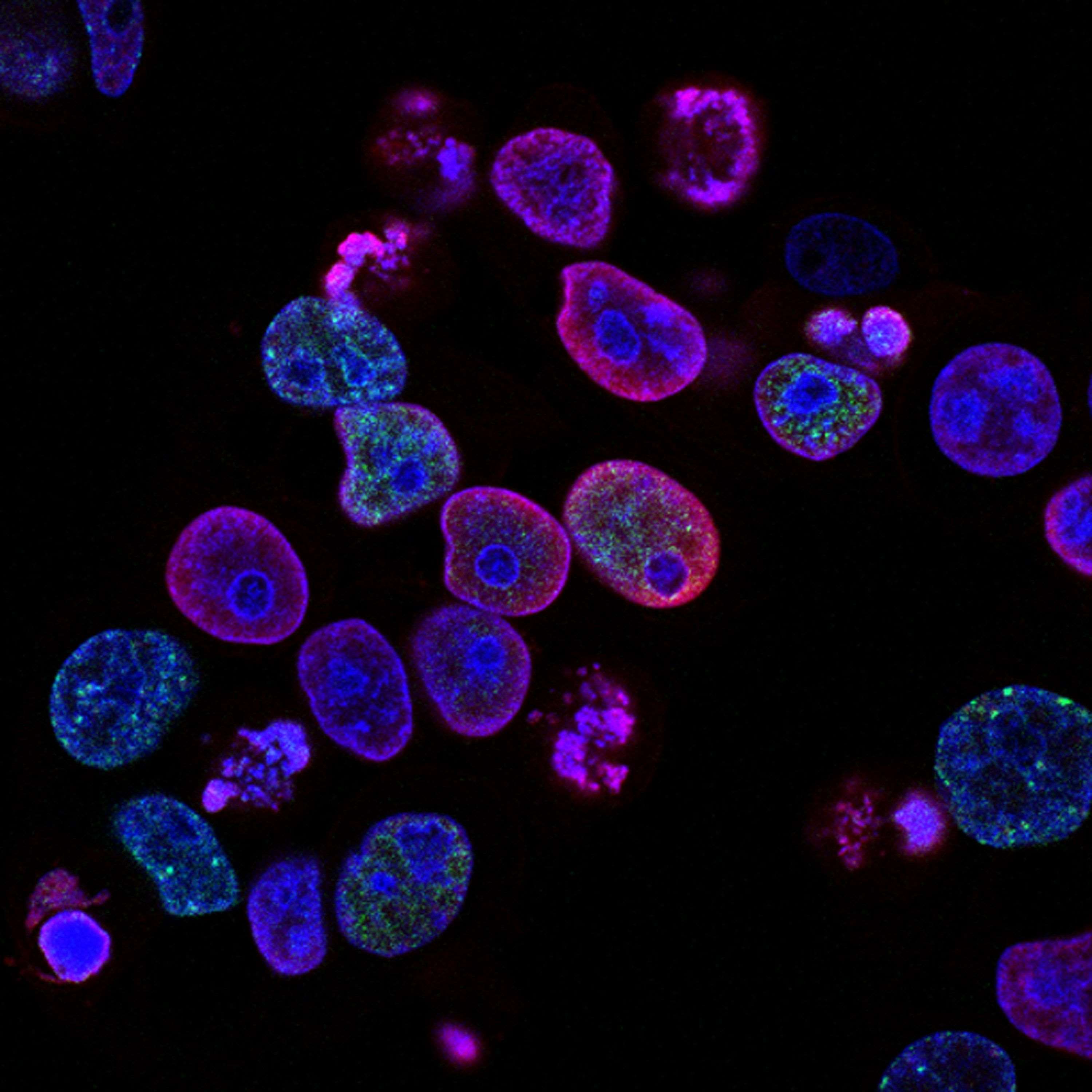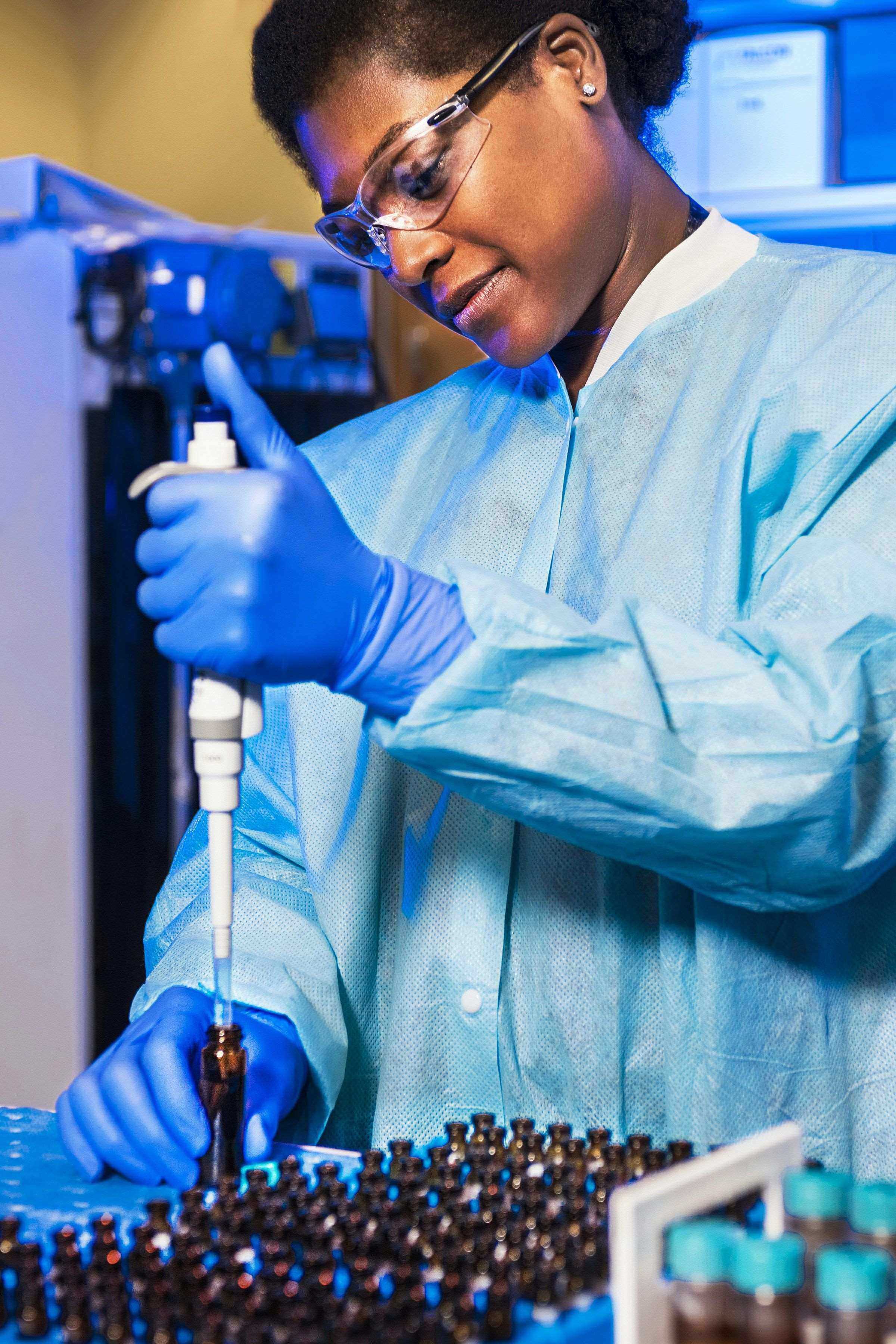Understanding how stress accelerates cancer spread
Stress is inevitable. But too much of it can be terrible for our health. Chronic stress can increase our risk for heart disease and strokes. How this works has remained a mystery challenge for cancer care.
Lockdown Delays in diagnosing melanoma due to Covid-19 lockdown may have contributed to over 100 000 years of life lost across Europe. • The word ‘cancer’ comes from the Latin for ‘crab’ – just like the zodiac sign• Cancer was first described by the ancient Egyptians• More than half of all cancers are preventable• There are more than 200 types and subtypes of cancer• Naked mole rats are immune to cancer• There are 28 million cancer survivors worldwide How this works has remained a mystery challenge for cancer care.
Xue-Yan He, a former postdoc in Cold Spring Harbor Laboratory (CSHL) Adjunct Professor Mikala Egeblad’s lab, says, “Stress is something we cannot really avoid in cancer patients. You can imagine if you are diagnosed, you cannot stop thinking about the disease or insurance or family. So it is very important to understand how stress works on us.”
Now, He and Egeblad may have reached a breakthrough in understanding exactly that. Working with CSHL Professor Linda Van Aelst, they discovered that stress causes certain white blood cells called neutrophils to form sticky web-like structures that make body tissues more susceptible to metastasis. The finding could point to new treatment strategies that stop cancer’s spread before it starts.
The team arrived at their discovery by mimicking chronic stress in mice with cancer. They first removed tumors that had been growing in mice’s breasts and spreading cancer cells to their lungs. Next, they exposed the mice to stress. What He observed was shocking.
She saw this scary increase in metastatic lesions in these animals. It was up to a fourfold increase in metastasis.”
Mikala Egeblad, Adjunct Professor, CSHL
The team found that stress hormones called glucocorticoids acted on the neutrophils. These “stressed” neutrophils formed spider-web- like structures called NETs (neutrophil extracellular traps). NETs form when neutrophils expel DNA. Normally, they can defend us against invading microorganisms. However, in cancer, NETs create a metastasis-friendly environment.
To confirm that stress triggers NET formation, leading to increased metastasis, He performed three tests. First, she removed neutrophils from the mice using antibodies. Next, she injected a NET-destroying drug into the animals. Lastly, she used mice whose neutrophils couldn’t respond to glucocorticoids. Each test achieved similar results. “The stressed mice no longer developed more metastasis,” He says.
Cancer Research eBook Compilation of the top interviews, articles, and news in the last year.
Download the latest edition
Notably, the team found that chronic stress caused NET formation to modify lung tissue even in mice without cancer. “It’s almost preparing your tissue for getting cancer,” Egeblad explains.
To Van Aelst, the implication, though startling, is clear. “Reducing stress should be a component of cancer treatment and prevention,” she says.
The team also speculates that future drugs preventing NET formation could benefit patients whose cancer hasn’t yet metastasized. Such new treatments could slow or stop cancer’s spread, offering much-needed relief.
– Source: News-Medical/Cold Spring Harbor LaboratoryNew AI-powered protein mapping tool optimizes cancer therapy
Scientists have developed a new AI tool that maps the function of proteins in a cancerous tumor, enabling clinicians to decide how to target treatment in a more precise way.
In cancers such as clear cell renal cell carcinoma (ccRCC), responses to existing treatments are different for each patient, making it difficult to identify the right drug treatment regime for each patient.
For example, cancer therapeutic Belzutifan has recently been approved to treat ccRCC, but only has a response rate of 49% in patients with the most common form of the condition.
To understand better why some patients respond better than others, researchers from the Universities of Bath and Nottingham studied the function of Hypoxia-Induced Factor Alpha (HIF2a), a key target of ccRCC that is blocked by Belzutifan.
Previous studies have shown that levels of HIF2a don’t necessarily correspond to the aggressiveness of the tumour, and that counterintuitively when there were greater levels of the protein present, the HIF2a was less active.
This means that administering higher doses of Belzutifan potentially exposes the patient to costly, toxic therapeutics that may not work and could even make the tumor more drug-resistant.
The cross-disciplinary team of biophysicists, biologists and computational scientists has devised a new tool, called FuncOmap, which maps the functional state of target oncoproteins onto the tumor images.
This will enable clinicians to visualize directly the locations in the tumor where oncoproteins are interacting, allowing for more accurate diagnosis and informing the best treatment for each patient.
Professor Banafshé Larijani, Director of the Centre for Therapeutic Innovation at the University of Bath co-led the study. She said: “People respond to drugs very differently. So it is crucial to be able to predict how patients will respond to drugs individually so a therapy can be tailored to be effective whilst giving the lowest dose to minimize side effects.
“Our new computational analysis tool uses precision to directly map the functional states of oncoproteins in patients’ tumor sections, so that clinicians can improve patient stratification, enabling personalized medicine.”
The team is now collaborating with Dr Amanda Kirane’s Laboratory, as well as other surgeons and clinicians, at Stanford University School of Medicine (USA) to develop and optimize the tool further in the clinical arena.
Professor Eamonn O’Neill, Head of Bath’s Department of Computer Science and Director of UKRI Centre for Doctoral Training in Accountable, Responsible and Transparent AI (ART-AI), said: “This study describes the kind of novel and impactful research that is the essence of working across disciplines.
“It brings together computer science, biology and physics, under the umbrella of the UKRI Centre for Doctoral Training in Accountable Responsible and Transparent Artificial Intelligence, to deliver image analysis that has the capacity to directly inform clinical decision-making and personalized clinical outcomes in cancer treatment as well as other diseases.”
– Source: News-Medical/University of Bath
Xue-Yan He, a former postdoc in Cold Spring Harbor Laboratory (CSHL) Adjunct Professor Mikala Egeblad’s lab, says, “Stress is something we cannot really avoid in cancer patients. You can imagine if you are diagnosed, you cannot stop thinking about the disease or insurance or family. So it is very important to understand how stress works on us.”
Now, He and Egeblad may have reached a breakthrough in understanding exactly that. Working with CSHL Professor Linda Van Aelst, they discovered that stress causes certain white blood cells called neutrophils to form sticky web-like structures that make body tissues more susceptible to metastasis. The finding could point to new treatment strategies that stop cancer’s spread before it starts.
The team arrived at their discovery by mimicking chronic stress in mice with cancer. They first removed tumors that had been growing in mice’s breasts and spreading cancer cells to their lungs. Next, they exposed the mice to stress. What He observed was shocking.
She saw this scary increase in metastatic lesions in these animals. It was up to a fourfold increase in metastasis.”
Mikala Egeblad, Adjunct Professor, CSHL
The team found that stress hormones called glucocorticoids acted on the neutrophils. These “stressed” neutrophils formed spider-web- like structures called NETs (neutrophil extracellular traps). NETs form when neutrophils expel DNA. Normally, they can defend us against invading microorganisms. However, in cancer, NETs create a metastasis-friendly environment.
To confirm that stress triggers NET formation, leading to increased metastasis, He performed three tests. First, she removed neutrophils from the mice using antibodies. Next, she injected a NET-destroying drug into the animals. Lastly, she used mice whose neutrophils couldn’t respond to glucocorticoids. Each test achieved similar results. “The stressed mice no longer developed more metastasis,” He says.
Cancer Research eBook Compilation of the top interviews, articles, and news in the last year.
Download the latest edition
Notably, the team found that chronic stress caused NET formation to modify lung tissue even in mice without cancer. “It’s almost preparing your tissue for getting cancer,” Egeblad explains.
To Van Aelst, the implication, though startling, is clear. “Reducing stress should be a component of cancer treatment and prevention,” she says.
The team also speculates that future drugs preventing NET formation could benefit patients whose cancer hasn’t yet metastasized. Such new treatments could slow or stop cancer’s spread, offering much-needed relief.
– Source: News-Medical/Cold Spring Harbor LaboratoryNew AI-powered protein mapping tool optimizes cancer therapy
Scientists have developed a new AI tool that maps the function of proteins in a cancerous tumor, enabling clinicians to decide how to target treatment in a more precise way.
In cancers such as clear cell renal cell carcinoma (ccRCC), responses to existing treatments are different for each patient, making it difficult to identify the right drug treatment regime for each patient.
For example, cancer therapeutic Belzutifan has recently been approved to treat ccRCC, but only has a response rate of 49% in patients with the most common form of the condition.
To understand better why some patients respond better than others, researchers from the Universities of Bath and Nottingham studied the function of Hypoxia-Induced Factor Alpha (HIF2a), a key target of ccRCC that is blocked by Belzutifan.
Previous studies have shown that levels of HIF2a don’t necessarily correspond to the aggressiveness of the tumour, and that counterintuitively when there were greater levels of the protein present, the HIF2a was less active.
This means that administering higher doses of Belzutifan potentially exposes the patient to costly, toxic therapeutics that may not work and could even make the tumor more drug-resistant.
The cross-disciplinary team of biophysicists, biologists and computational scientists has devised a new tool, called FuncOmap, which maps the functional state of target oncoproteins onto the tumor images.
This will enable clinicians to visualize directly the locations in the tumor where oncoproteins are interacting, allowing for more accurate diagnosis and informing the best treatment for each patient.
Professor Banafshé Larijani, Director of the Centre for Therapeutic Innovation at the University of Bath co-led the study. She said: “People respond to drugs very differently. So it is crucial to be able to predict how patients will respond to drugs individually so a therapy can be tailored to be effective whilst giving the lowest dose to minimize side effects.
“Our new computational analysis tool uses precision to directly map the functional states of oncoproteins in patients’ tumor sections, so that clinicians can improve patient stratification, enabling personalized medicine.”
The team is now collaborating with Dr Amanda Kirane’s Laboratory, as well as other surgeons and clinicians, at Stanford University School of Medicine (USA) to develop and optimize the tool further in the clinical arena.
Professor Eamonn O’Neill, Head of Bath’s Department of Computer Science and Director of UKRI Centre for Doctoral Training in Accountable, Responsible and Transparent AI (ART-AI), said: “This study describes the kind of novel and impactful research that is the essence of working across disciplines.
“It brings together computer science, biology and physics, under the umbrella of the UKRI Centre for Doctoral Training in Accountable Responsible and Transparent Artificial Intelligence, to deliver image analysis that has the capacity to directly inform clinical decision-making and personalized clinical outcomes in cancer treatment as well as other diseases.”
– Source: News-Medical/University of Bath







Kommentaar
Republikein
Geen kommentaar is op hierdie artikel gelaat nie